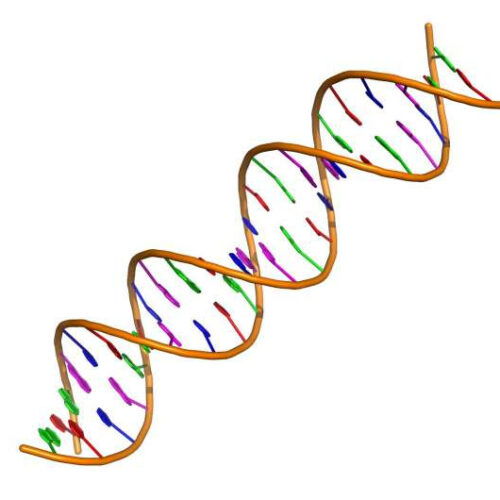by Ecole Polytechnique Federale de Lausanne Enrico Amico, a scientist and SNSF Ambizione Fellow at EPFL’s Center for Neuroprosthetics and EPFL’s Medical Image Processing Lab. Credit: Alain Herzog / EPFL An EPFL scientist has found that brain fingerprints—or maps of the neural connections within our brain—can be used to detect a decline in cognitive ability. That’s...
Inhaled dry powder formulation of broad-spectrum antiviral against COVID-19 and influenza
by The University of Hong Kong SEM image of inhaled tamibarotene powder formulation at x5,000 magnification. Credit: The University of Hong Kong The collaborative research team formed by the Department of Pharmacology and Pharmacy and Department of Microbiology, LKS Faculty of Medicine, The University of Hong Kong (HKUMed), has developed an inhalable dry powder formulation of tamibarotene, a...
New Strategy for Drug Design: Keeping Copper Atoms Closer to Keep Bacteria Away
Hydrogen peroxide reacts with copper to produce hydroxyl radicals with strong antibacterial properties. However, this requires high copper concentrations because two copper atoms have to come close together, which occurs by chance. Now, scientists at Tokyo University of Science, Japan, engineered a long polymer with copper-containing side units that create regions with locally high copper...
‘Zombie cells’ hold clues to spinal cord injury repair
Mammals have a poor ability to recover after a spinal cord injury which can result in paralysis. The main reason for this is the formation of a complex scar associated with chronic inflammation that produces a cellular microenvironment that blocks tissue repair. Now, a research team led by Leonor Saude, group leader at Instituto de...
Stem cell treatments alleviate muscular dystrophy symptoms in compassionate-use study
ALPHAMED PRESS IMAGE: BEATA Ś WIą TKOWSKA-FLIS, M.D., PH.D., NEUROLOGIST, UNIT HEAD AT KMC’S POLISH CENTER FOR CELL THERAPIES AND IMMUNOTHERAPY AND STUDY LEADER. CREDIT: ALPHAMED PRESS Durham, NC – Results of a compassionate-use study released in STEM CELLS Translational Medicine show promising results for treating muscular dystrophies with mesenchymal stem cells (MSCs) derived from Wharton’s jelly...
DNA tags enable blood-based tests to assess cancer treatment outcomes
by Georgetown University Medical Center A double-stranded DNA fragment. Credit: Vcpmartin/Wikimedia/ CC BY-SA 4.0 Cell-free DNA (cfDNA) shed into the blood was discovered in the late 1940s but with rapid advances in genomics and computational analytics in just the past few years, researchers at Georgetown Lombardi Comprehensive Cancer Center now believe that studying tags, or modifications...






